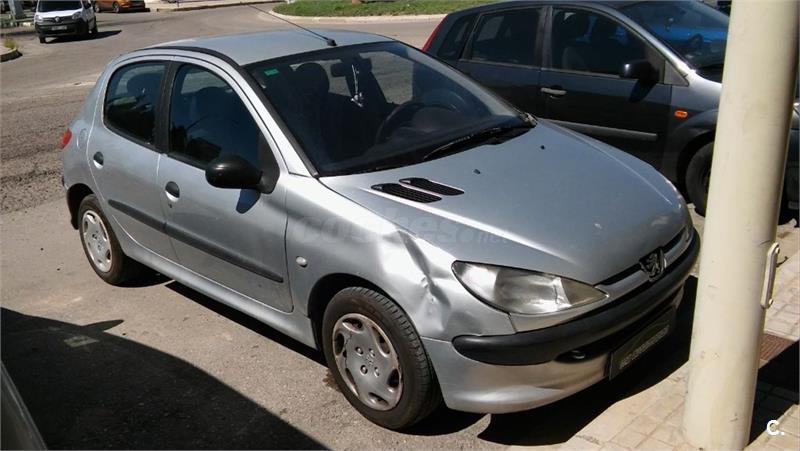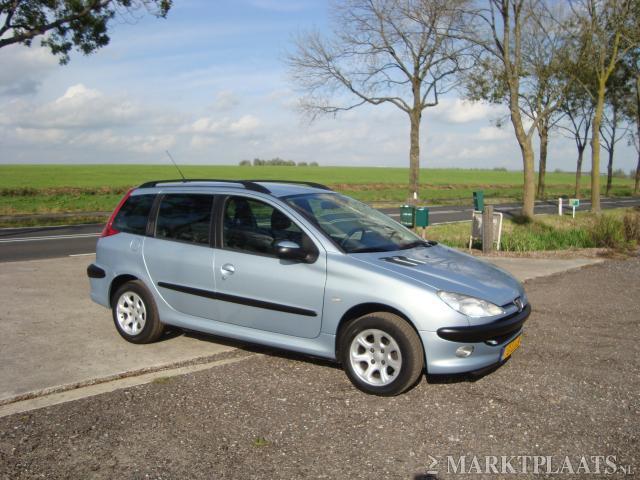

The 206 was originally launched as a hatchback with 1.1L, 1.4L, and 1.6L petrol engines and a 1.9L diesel engine, an HDi version with common rail coming later. With no larger in-house platform from PEUGEOT to base its new supermini on (the Peugeot 106 shared its platform with the 106), Peugeot developed an all-new front drive platform for the 206. The prototype was extensively tested on the Belchamp test circuit in the Valentigney forest. The development costs a total of 6.3 billion francs, with intensive use of IT as it is their first car designed with a digital mock-up along with crash simulations. The design was fixed six months after project approval, and the project took 34 months from design freeze to start of production.

The in-house design team was led by Peugeot's Head of Design, Murat Günak, and designer Gérard Welter. On 7 April 1994, Jacques Calvet, then president of Peugeot, approved of the 206 development program codenamed T1, with launch planned by 1997. A new supermini was required, and the 206 was launched in 1999 as a somewhat belated replacement for the 205. With the 205 phased out, other superminis like the Ford Fiesta and Volkswagen Polo continued to sell well and increased in popularity, and without a direct competitor to these cars Peugeot was losing sales fast.

Between the 106 and 306, Peugeot hoped that the 205 would not need to be replaced, and could be phased out slowly, while customers who would normally plump for the 205 would continue to have a choice with either a smaller or larger car. Instead, Peugeot followed a unique strategy and decided that its new, smaller, supermini, the Peugeot 106 (launched in 1991), would take sales from the lower end of the 205 range while the lowest models of the Peugeot 306 range, launched in 1993 to replace the Peugeot 309, would take sales from the top-end 205s. Overview Project ĭuring the early 1990s, Peugeot decided not to directly replace the Peugeot 205, citing the reason that superminis were no longer profitable or worthwhile. As the result, the 206 was counted as the thirtieth most long-lived single generation car by Autocar magazine.
#206 1.4 xline license#
As of July 2021, the car remained to be produced under license in Iran by IKCO. The 206 is the best-selling Peugeot model of all time with 8,358,217 cars sold by 2012. In South America it continued to be offered as the 207 Compact nameplate until January 2017, and furthermore in China, both under the 207 nameplate and as the Citroën C2. This version was subsequently launched in Europe in February 2009, only in hatchback form and marketed as the 206+. Its facelifted version was initially launched in South America in September 2008, and in China in November 2008, in hatchback, sedan and station wagon body styles, and marketed as the 207 Compact, and as the 207 respectively. Developed under the codename T1, it was released in September 1998 in hatchback form, which was followed by coupé cabriolet (206 CC) in September 2000, station wagon (206 SW) in September 2001, and a sedan version (206 SD) in September 2005, before being replaced by the 207 in April 2006. The Peugeot 206 is a supermini car ( B-segment) designed and produced by the French car manufacturer Peugeot since May 1998 as a replacement to the Peugeot 205.


 0 kommentar(er)
0 kommentar(er)
